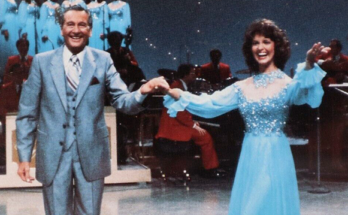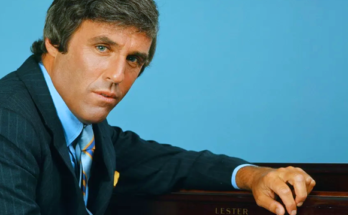
Thirty-five years ago today I called in sick to my part-time job at Long John Silver’s, cranked up my grandma’s Marantz stereo system to the max and plopped my 16-year-old ass down in the middle of her living room floor to rock out to the entire day of MTV’s Live Aid concert broadcast on her 23-inch Zenith color console television set. I was so pumped to be one of the 40% of people on Earth watching this global famine relief charity superconcert, I frankly didn’t care if Earl fired me. This was Generation X’s moon landing and Woodstock rolled up in one and I was not about to miss it.
It’s easy to remember the highlights. There was, of course, Queen’s legendary set, 17 minutes that have in the ensuing decades been practically fetishized. George Michael, already riding high on the success of Wham’s “Make It Big” album, was instantly elevated to superstar status when he joined Elton John onstage to sing his heartfelt rendition of “Don’t Let the Sun Go Down on Me.” Bono awkwardly forced his U2 bandmates into an endless ad-lib on the song “Bad,” and somehow accidentally cemented their legacy as an essential live act.
It was 1985, so naturally there was Madonna, and McCartney, and the Who, and Sting, and Eric Clapton, and Duran Duran, and Dire Straits, and the Beach Boys (with Brian Wilson!). Bob Dylan showed up with Ron and Keef from the Stones, because what’s a charity concert without Dylan?
The broadcast also included the debut of the famously manic — yet inexplicably low-budget — video of David Bowie and Mick Jagger prancing around to their synthpop cover of Martha and the Vandellas’ “Dancing in the Street,” quantifiably the moment the planet achieved Peak Eighties. (The video, like so much of the ludicrous pop culture of the era, later earned a robust second life as a joke.)
And of course there are always the second-stringers, flavors-of-the-month and just-bubbling-under artists, too. At Live Aid there were the Hooters (introduced by comedy power couple Chevy Chase and Joe Piscopo!), Nik Kershaw, Style Council, Howard Jones, Billy Ocean, Ultravox (featuring Band Aid co-conspirator Midge Ure), Boomtown Rats (featuring the other co-conspirator, Bob Geldof), Spandau Ballet, Sade, Paul Young, Adam Ant. Simple Minds were there, too, looking like a band from an episode of Star Trek: The Next Generation.
But there was so much more in that 16 hours of television.
There was the “unofficial” opening act of the US concert, Bernard Watson, a tenacious teenager who slept in his Oldsmobile outside JFK Stadium for a week begging Bill Graham to let him play. He fumbled through a Dylan cover and an original, breaking a string and dropping his pick before disappearing into history. Then came the official American kickoff, which saw emcee Jack Nicholson introduce folk legend Joan Baez, who sang “Amazing Grace.”
Meanwhile across the pond, the UK opened their portion of the show with a bit of pomp and circumstance as Prince Charles and Princess Di took their seats — followed by a footstomping performance by stalwart British rock dinosaurs the Status Quo. And speaking of stalwart British rock dinosaurs, let’s not forget that Ozzy Osbourne reunited with Black Sabbath that day to play a mercifully short set while all members were extremely hungover from their high-spirited rehearsal the night before.
Even forced to play in such a state (and before ten in the morning, at that!), Sabbath still came off the best of all the legacy acts of the day; Led Zeppelin suffered from a hoarse Robert Plant and a sloppy Jimmy Page, the Who’s set was marred with technical difficulties, CSN couldn’t keep their harmonies together.
Duran Duran, despite being at the absolute acme of their power and popularity in 1985, didn’t fare much better; nothing could save them from the tidal wave of snark generated by Simon Le Bon’s enormous clam in the middle of the band’s Bond theme, “A View to a Kill,” a moment that shall echo in YouTube infamy through the ages forever.
Phil Collins, another artist who was very much having his moment in the sun at the time, famously showboated by playing half the gig at London’s Wembley Stadium, then quickly crossing the Atlantic Ocean by Concorde to play the second half at JFK Stadium in Philly. He ended up being unhappy with all his performances for the day, at one point visibly grimacing when he played a bum note on the piano during his performance of “Against All Odds,” and seriously regretting his brief turn in Bonzo’s seat the moment he sat down behind the reunited Led Zeppelin. It was a very long day for Phil, indeed.
Black music was perhaps predictably underrepresented at the event on both sides of the Atlantic, and in fact there was criticism at the time over the fact that the only black acts whose performances were presented on-air in their entirety were those guesting onstage with white artists. Temptations legends David Ruffin and Eddie Kendricks came on as guests of Hall & Oates, George Thorogood brought out Bo Diddley and Albert Collins, Branford Marsalis joined Sting. But sets by Run-DMC (the only hip-hop act on any stage that day), Ashford & Simpson with Teddy Pendergrass, the Four Tops, B.B. King and others were all truncated or delayed to fit into the broadcast between white artists who were considered the priority.
Then there were the onstage team-ups. Everybody remembers the John/Michael collaboration, but how about the two-headed guitar monster that came to life when Carlos Santana and Pat Metheney joined forces that day to make music that sounds like the video game/soft porn music of the gods? Or the emotional climax of Paul McCartney’s solo piano performance of “Let It Be,” when he was joined onstage by a choir made up of David Bowie, Pete Townshend, Alison Moyet and Geldof? How about Thomas Dolby backing up Bowie on synths? Or wackiest of all, the Thompson Twins’ rockist take on the Beatles’ “Revolution,” featuring guests Nile Rodgers (the superstar producer, songwriter, guitarist behind Chic, Let’s Dance-era Bowie, Sister Sledge and much more), Steve Stevens (longtime Billy Idol guitar slinger) and Her Royal Highness Ms. Madonna Ciccone herself? Leaves a person breathless just reading that.
But perhaps the most overlooked moments of Live Aid are the satellite feeds from concerts other than the two main events in the US and UK. INXS put in a fantastic performance at Australia’s “Oz for Africa” concert in Sydney. B.B. King’s set was beamed from the Hague. The Japanese hair metal band Loudness represented with their hit “Crazy Night,” performed in a studio in Tokyo. Even the uptight Soviets allowed their top rock group Autograph (not the Cali dudes who had the US hit “Turn Up the Radio”) to participate with a broadcast from Moscow.
At the bottom of the pile of foreign contrbutions are all-star performances from countries where the stars are not widely known outside their borders. Austria for Afrika, Germany’s Band für Afrika and Yugloslavia’s Yu Rock Mission all modeled themselves on the Band Aid supergroup charity single template, and each offered up a live performance of its own national megahit during the marathon Live Aid broadcast. (Remember Yugoslavia?)
At the end of the day, nearly two billion people across 110 nations of the earth watched the proceedings, and $127 million was raised toward famine relief in Ethiopia. Cantankerous Irish troublemaker Bob Geldof was set up for a quick knighthood, if not sainthood. And, one can only hope, Phil Collins got the best night’s sleep of his life.



